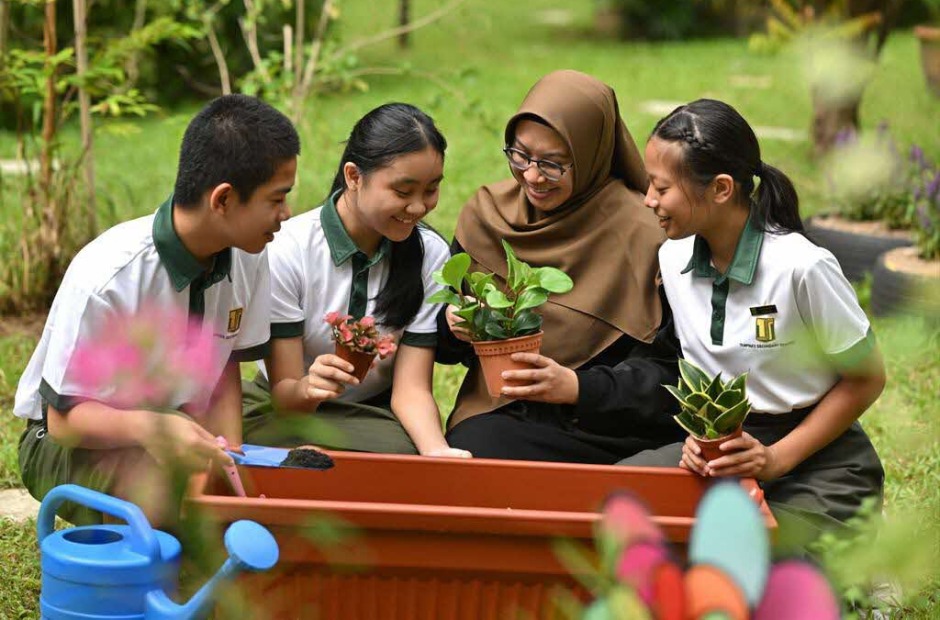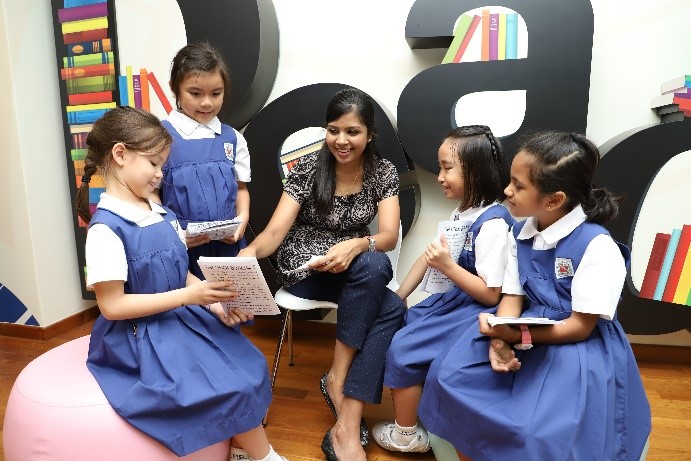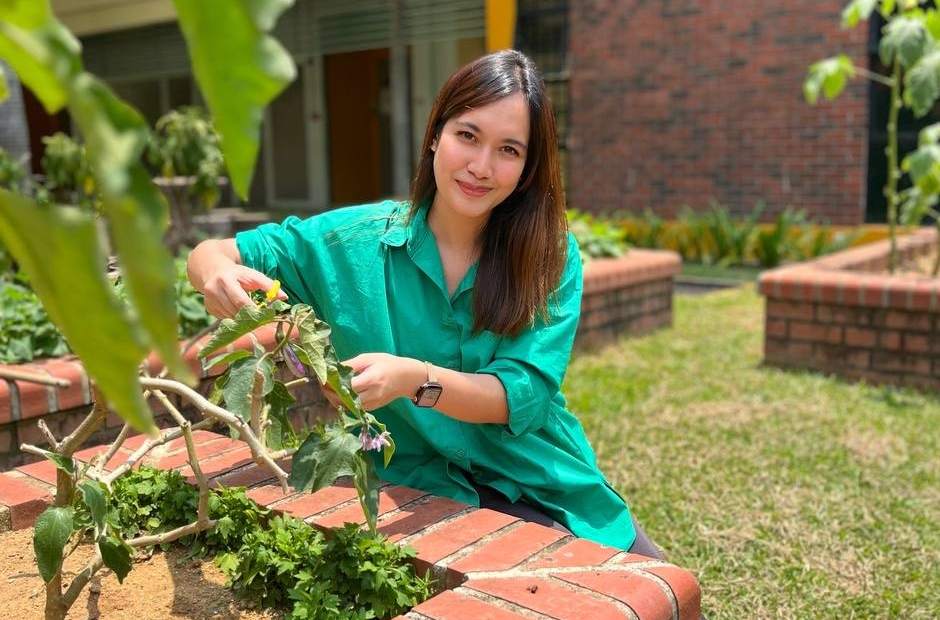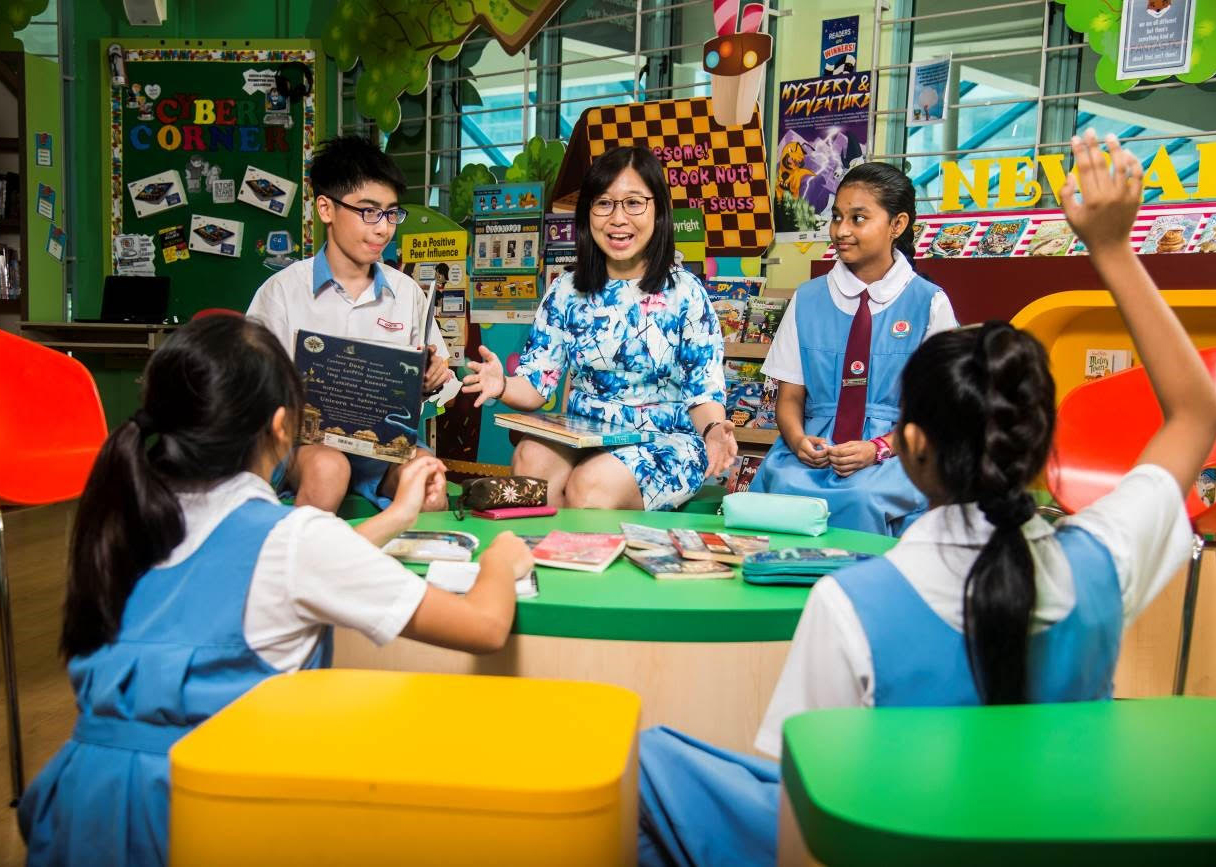In those early days, only a handful of trees adorned the school grounds.

Green ambitions
Mrs Sheri’s goal, as the head of CCE, was to cultivate optimism through biodiversity. Starting an eco-garden, she believed, could be the perfect canvas for this vision. “It’s not just about (creating) a picturesque garden; it’s about embracing the process of learning and overcoming challenges,” she explains.
She knew she could not do this alone. And so, when Mr John Lim, a Mathematics teacher, joined the CCE committee in 2022, things took shape.

The team leading the Tampinesian Sustainability Culture. (From left to right) Mrs Preeti, Mr Nallu Dhinakharan, Mdm Norfatihah Hanim Norazlan, Mr Lim, and Mr Benjamin Low Yick Loong having fun during Earth Week 2023.
As Mrs Sheri shared her vision with Mr Lim and the CCE team, Mr Lim’s personal investment in the garden deepened. “We wanted to create an environment within the school that is nurturing and allows everyone to thrive and contribute to a caring community,” he says.
Choosing a central quadrangle surrounded by blocks of classrooms, Mrs Sheri and Mr Lim began the transformation: “As students walked to their classes, a quick glance downward offered them a view to appreciate.”

A top-down view of the garden.
The metamorphosis begins
Mrs Sheri explains why they deliberately chose not to use aeroponics or hydroponics: “When we involve our students in planting seeds, they experience a cathartic connection with the soil.
Our focus isn’t on harvesting; it is about learning, embracing mistakes, and enjoying our connection with nature and each other.”

Student volunteers spent six hours scraping off rust and later painting it gold, one of the colours of the school crest.
Bringing learning to life
The garden’s diverse ecosystem provided learning experiences for the students. For example, when they noticed that the birds were eating the caterpillars in the garden, the students participated in the Adopt-a-Butterfly programme by taking the caterpillars home.
By caring for these insects, the students provided them with the opportunity to undergo metamorphosis.

Students have taken to sharing photos of the butterflies with their peers and teachers.
When the caterpillars transform into butterflies, students release them back into the garden. Mr Lim says, “This practice teaches the valuable lesson that everything from nature should eventually return to nature.”

Tailors at work: The most intriguing quirk about the common tailorbird is that it creates its nest by sewing leaves together with its beak.
Cultivating more than just produce
“In the long run, they’ll realise that achieving something involves dedication, planning, and acquiring the skills to sustain it,” says Mr Lim.

The students’ efforts bear fruit as they harvest the garden’s vegetables for a noble cause.
The heart of the school
The school staff has also reaped the benefits of the eco-garden. They would gather herbs and spices to cook their favourite dishes. Teachers also use the plants and flowers from the garden in their Food and Consumer Education lessons.

Mdm Warda and Mdm Norfatihah Hanim Norazlan savouring kuih seri muka made from blue pea flower.
In a gesture of gratitude, one teacher, Mdm Warda Mohamed Shariff, made kueh with blue pea flowers from the garden and gifted it to Mrs Sheri. Mdm Warda initially remarked, “I took it from your garden,” to which Mrs Sheri responded, “It’s not my garden, it’s everyone’s garden.”

Principal Lan Mingjun and head prefect Peh Chor Keat Ryan on Tree Planting Day 2022.






